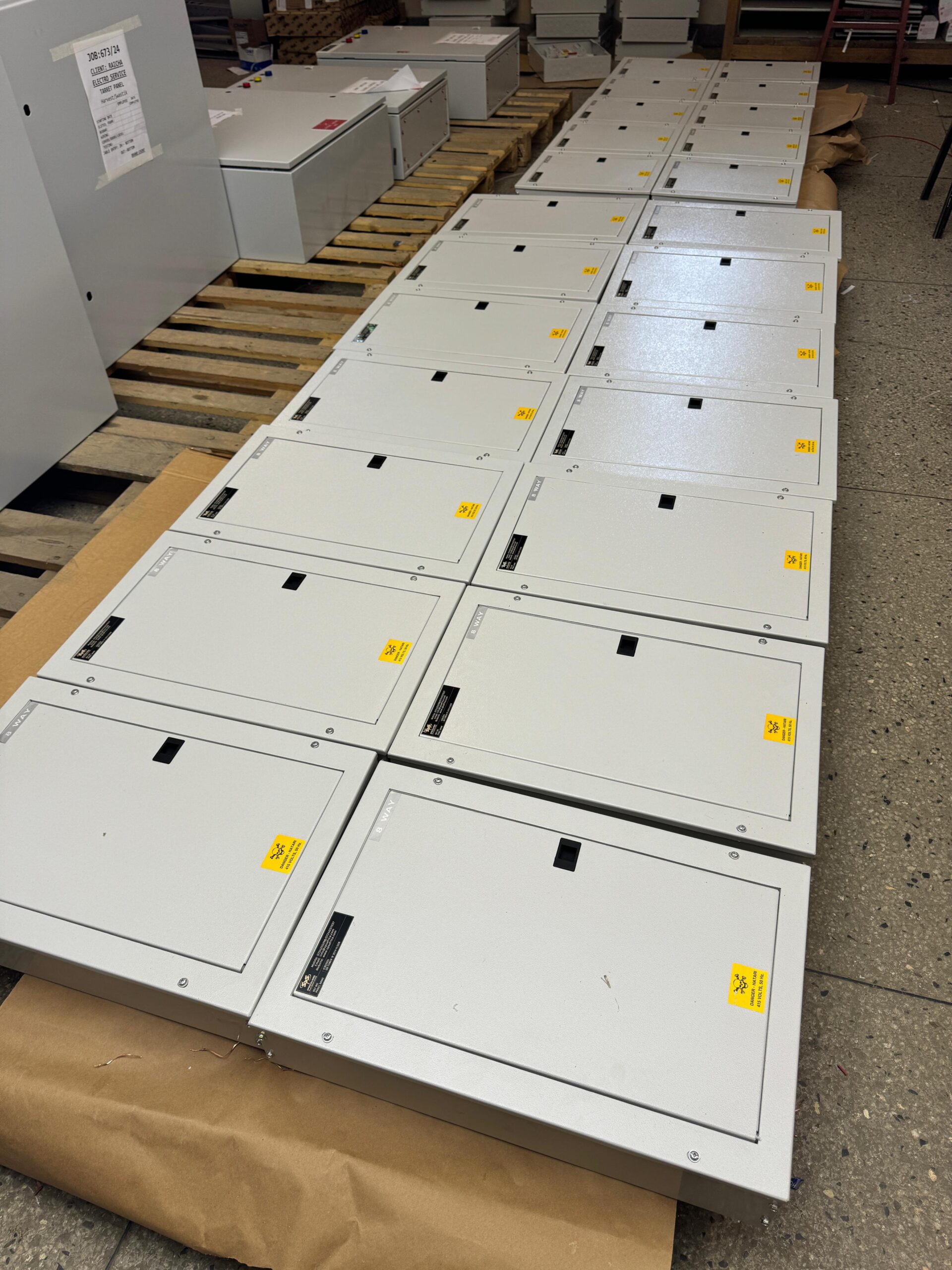DISTRIBUTION BOARDS
From domestic to industrial applications, we provide a number of distribution board options to suit every customers needs.
From domestic to industrial applications, we provide a range of distribution board options to meet different customer needs. Our solutions feature circuit breakers from trusted global brands including ABB, Terasaki, and Chint—ensuring compliance with international standards and consistent performance. Whether for your home or business, we deliver dependable, high-quality electrical distribution systems.

From domestic to industrial applications, we provide a number of distribution board options to suit every customers needs. Our leading suppliers are internationally recognised and are fully compliant with all measures thus, this gives us an opportunity to provide only the best solutions for your home or your business.
A distribution board, also known as an electrical panel or fuse box, is a crucial component in an electrical supply system. It divides the electrical power feed into subsidiary circuits, each protected by a fuse or circuit breaker, ensuring safe and efficient distribution of electricity throughout a building.
Distribution boards come in various types to suit different needs, including:
Main Distribution Boards (MDBs): Serve as the primary power distribution point, handling high-power loads and distributing electricity to sub-distribution boards.
Sub-Distribution Boards: Receive power from the MDB and supply it to specific areas or systems within a building.
Three-Phase Distribution Boards: Used in industrial and commercial settings to manage and distribute power in systems utilizing three-phase electrical supplies.
Fuse Boxes: Common in older installations, these use fuses to protect individual circuits.
The selection depends on the specific requirements of the application, such as load capacity and safety standards.
Selecting the appropriate distribution board involves:
Assessing Power Requirements: Determine the total electrical load and the number of circuits needed.
Considering the Environment: Evaluate factors like exposure to moisture or dust, which may require boards with specific IP ratings.
Compliance with Standards: Ensure the board meets local and international electrical safety standards.
Future Expansion: Consider potential future increases in load or additional circuits.
Consulting with a qualified electrical professional can provide guidance tailored to your specific requirements.
While voltage stabilizers effectively manage voltage fluctuations, they may not protect against all electrical anomalies such as power surges from lightning strikes or complete power outages. For comprehensive protection, consider using stabilizers in conjunction with surge protectors and uninterruptible power supplies (UPS) as needed.
#Distribution Boards Brands




